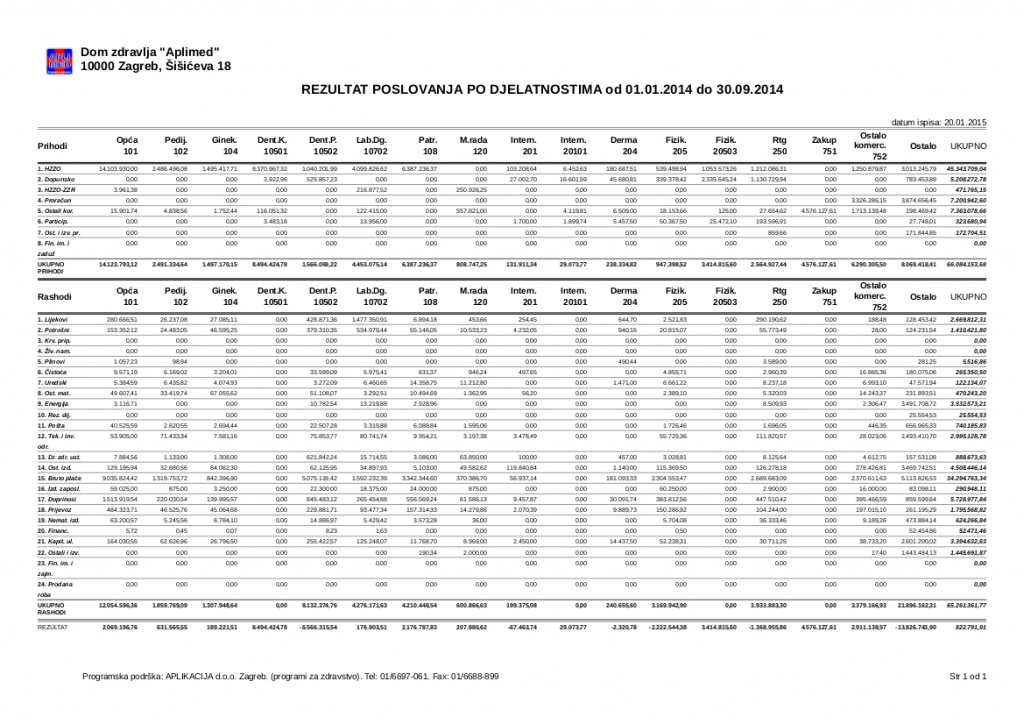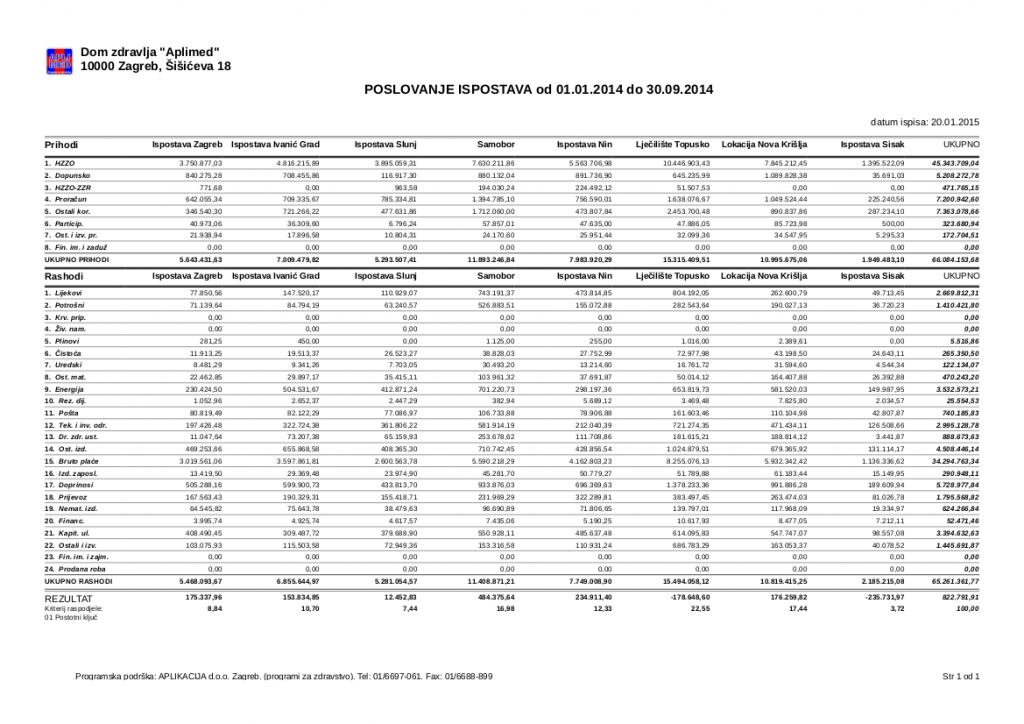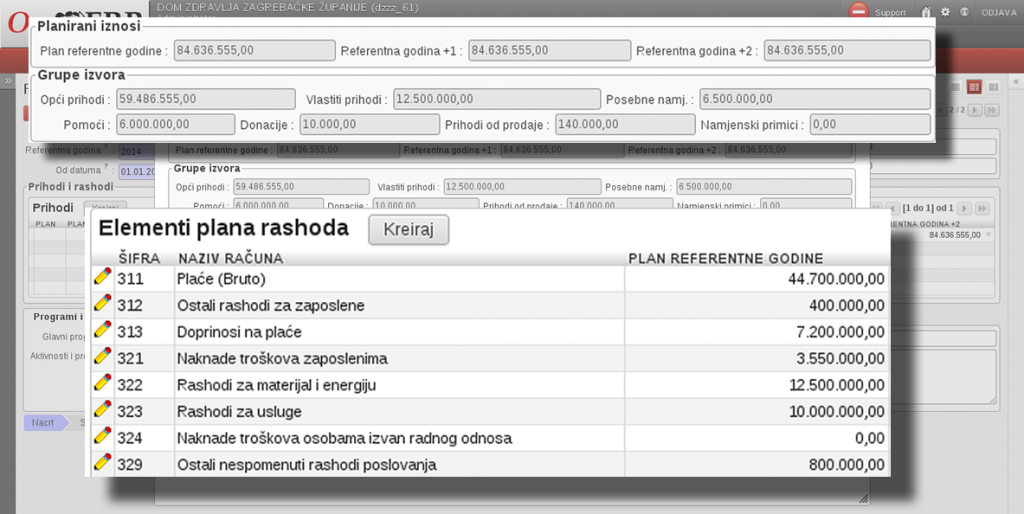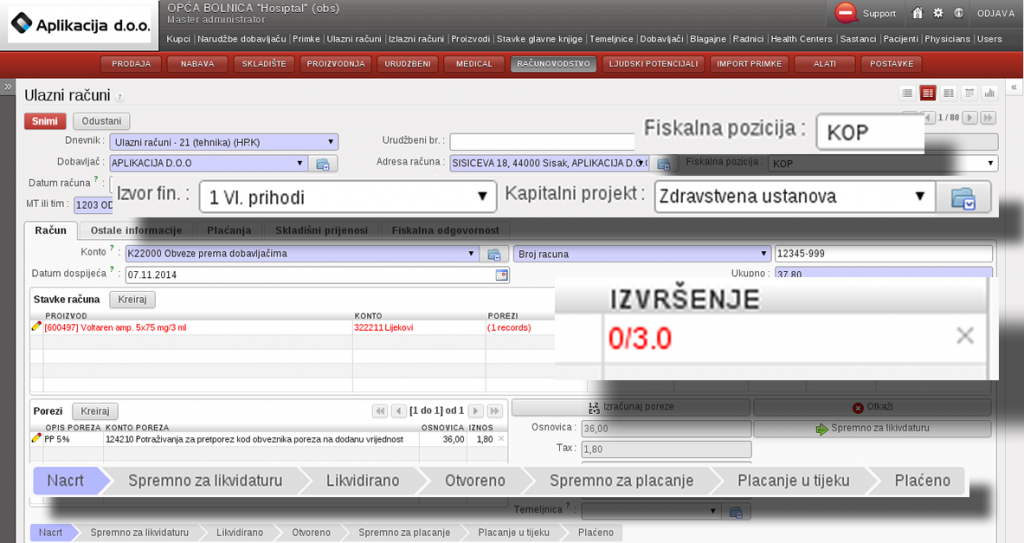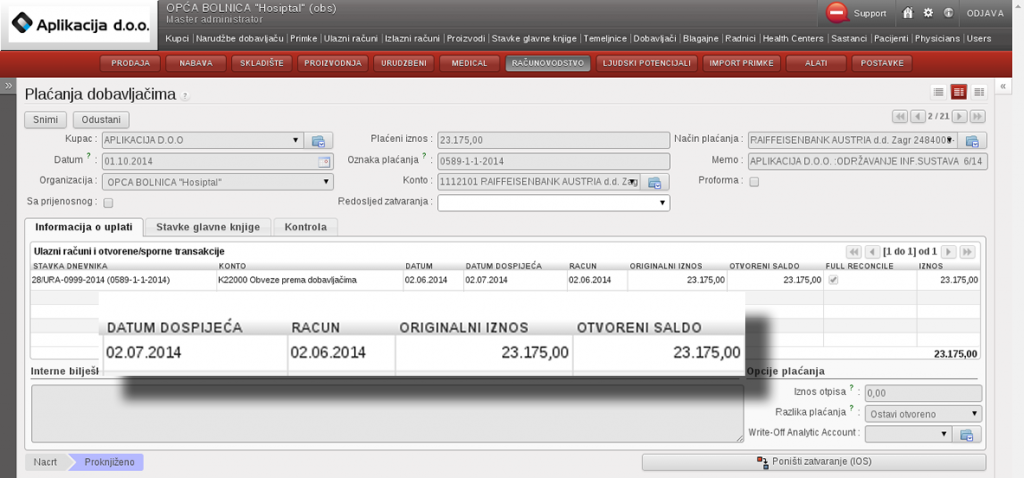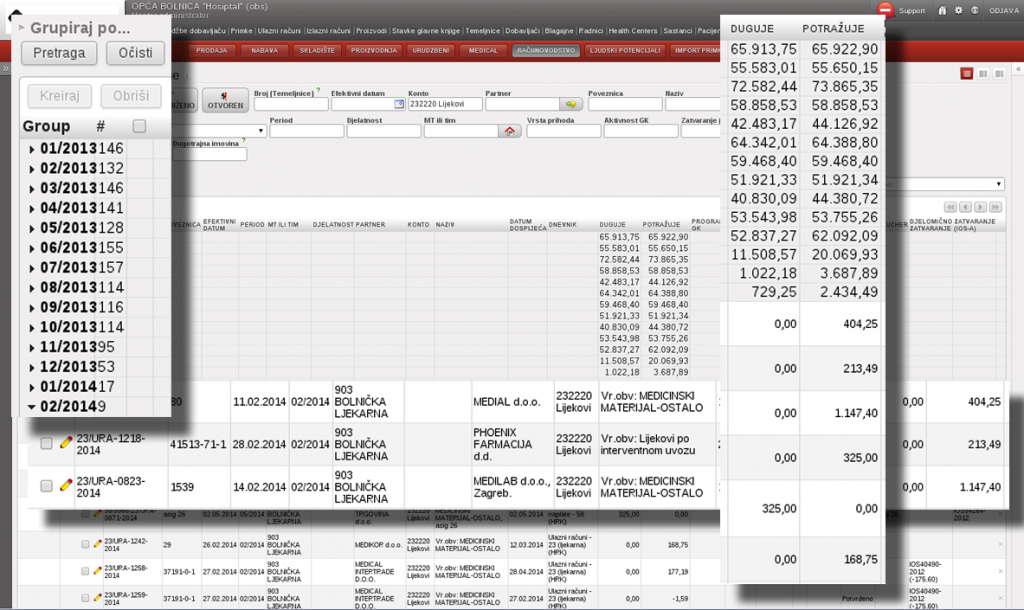
ERP – Apli-PRORAC
Integrated Business System
Public sector accounting applications
key Features
Procurement process control at 2 levels
Use of double control for better and more efficient purchase expense management. At the first level, you can reduce costs by setting a finance cap (limit) for a specific lower department unit – that way, the manager of that department will be directly involved in resource allocation because he or she will have to make purchase requisitions within the limit set. One lower department unit can make purchase requisitions (addressed to a warehouse or procurement department) only if it hasn’t reached its monthly limit. At the second level, you can use procurement plan control – while entering purchase order lines, the system compares the line entered amount with the amount planned (for a group that the product belongs to). This control only informs the user if the order she or he is working on has reached or broken the amount planned. However, it doesn’t necessarily stop the procurement process.
Finance and procurement plan
Plan your expense accounts to match income accounts. You can make a projection for the next two years over the defined coefficient. We’ve made it easy to copy the entire finance plan (re-plan, re-balance). Procurement groups are hierarchically organized (common procurement vocabulary). Define a plan for each group within a certain period. The system compares purchase orders to specific plans in real time.
Supplier invoice
Reports based on finance sources and defined projects. Deduct purchase tax completely, partially via a certain coefficient, or treat the complete tax amount as expense (no deduction) – one of these options can be used on each supplier invoice differently (!). While looking at invoice lines, the user can see product reception (shipment status) – red colored lines suggest that some items have not been received yet.
Bank/Cash statements and reconciliation
Import your bank journal from a file. Automatic reconciliation during the import process. Import your supplier or customer payment specifications via a spreadsheet file or any other delimiter-separated file. You can use the “group by” reconciliation option when reconciling 5.000 invoices or more in order to keep your general ledger smaller. Reconciliation via assignation.
General ledger
General ledger with standard analytics (partner, program, activity, location/team/department, business classification, base-document reference). The usual set of accounting reports PLUS a balance sheet of one or more locations or departments modified by costs and revenues derived from units outside the scope of the report. This option uses defined cost and revenue “distribution keys”.
Assets
Keep track of your assets and small inventory. Reports before and after annual or periodic inventory control. Automatic depreciation process using a defined scheme (asset categories and depreciation methods).
Accounting
Creates general ledger items automatically: warehouse (picking in, picking out, and internal), supplier, and customer invoices (using a defined bookkeeping scheme) and inserts them in invoice books. VAT declaration (specification) report containing columns “deductible/non-deductible”.
Customer invoices
Reports by income types, activities, business classifications, and programs. Import customer invoices from a separate invoicing system (for those of our customers who don’t use our medical system).
Cash register
Generate supplier or customer invoices for each cash receipt or cash payment. Organize money bills for each day. Automatically create and post general ledger cash items to the cash register.
Purchase (procurement) contracts
Manage all your contracts – track their progress. Contracts can be defined and organized into groups or categories. Import the contract’s product specification directly from the spreadsheet file. Reference each purchase order to any of the existing contracts.
Hospital pharmacy
Module developed especially for pharmacy warehouse management. Produce your compounds by using production orders.
Other features…
Letter management
The letter management module manages 3 different types of documents:
- Documents: Incoming or outgoing letters, memos or general documents
- Letters: letter journal (in&out)
- Invoices from suppliers: A handy feature that records when a specific supplier’s invoice has been received.
Document duplication
Each and every document (purchase requisition, purchase order invoice, etc.) can be duplicated with one single click. Then you get a copy of certain documents ready for modifications.
No more items to re-enter
Convert your purchase requisition to purchase order or internal stock pick, purchase order to in-stock pick, or supplier’s invoice – without re-entering the document’s lines. Each document transition depends on the user’s roles and defined workflow. While each document passes through the workflow process, the system records which user made which transition and when.
Workflow and document management
You can set up your own workflow to match your business process (procurement, sale, goods shipping, or reception). Each document within that workflow gets its own status that can be altered by users who are authorized on your behalf to make certain workflow transitions (like purchase order confirmation exclusively to the purchase manager).
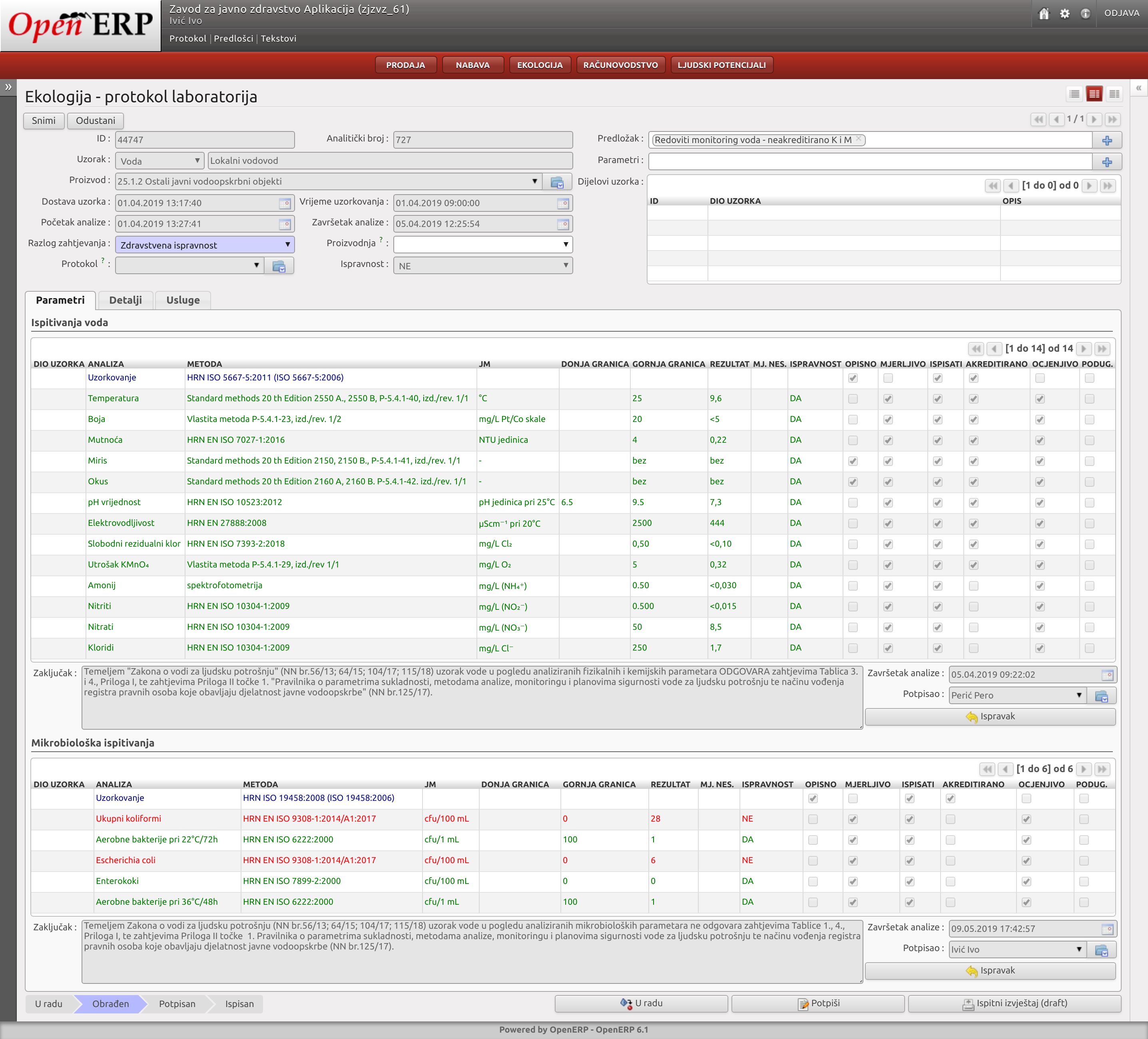
Benefit
Using our system, among all government estimated reports, by activating (really) only one button, you get a table of income and expense of all institutions broken down by cost location and by activities.
